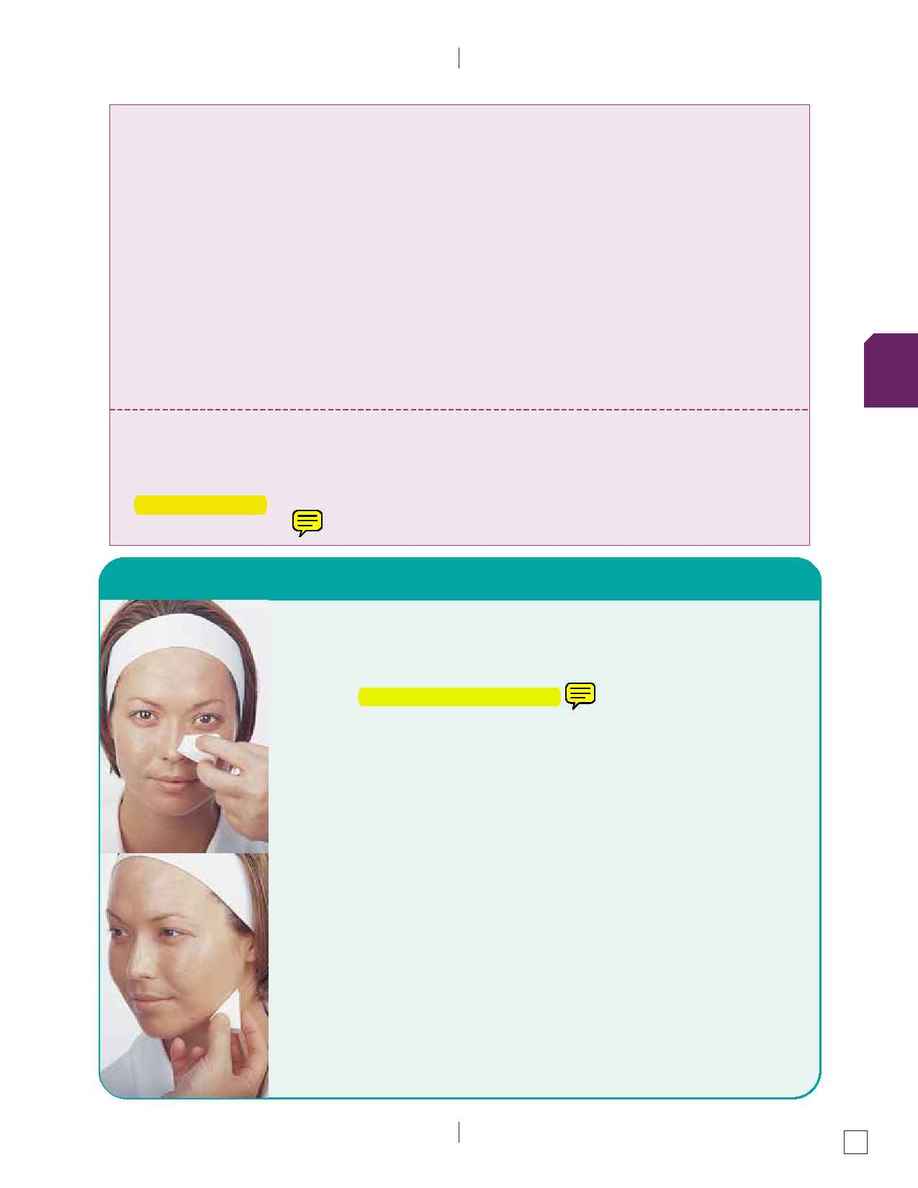
m a k e u p
421
Salon Fundamentals
TM
Esthetics
12
Begin by transferring a dime-sized amount of product to your palette with a
cotton swab.
1. Using a cosmetic sponge or a brush, apply the foundation onto the
center of the cheeks.
2. With the sponge, use a pat and roll motion and blend the foundation
into the skin from the side of the nose to the hairline. Begin working
along a horizontal section beneath the eye.
3. Move to the next horizontal section across the center of the cheek.
4. Complete this portion of the face by patting and rolling along
the jawline.
5. With the product that remains on the sponge, use the same pat and roll
motion to apply foundation to the forehead. Note: If more coverage is
necessary in the T-zone (forehead, nose and chin), add an extra dot of
foundation onto the forehead, chin and lightly over the lips.
6. Continue applying foundation over the eyelids.
7. Work down the center and sides of the nose.
8. Move to the upper lip.
9. Complete the foundation application in the chin area, blending it into
the jawline.
APPLYING FOUNDATION
Skin Tone Identification
Skin tones can be classified as warm or cool depending on their color. They can also be classified
as light, medium, dark or very dark.
Tone
Skin Color
·
Light creamy Yellow to slightly peach; light
·
Golden
Yellow cast; light
·
Pink
Pink or blue to red;
light to medium
·
Tan
Carmel-colored to brown;
light to dark with red or
yellow undertones
Undertones can also be classified as warm or cool.
Cool undertone
Neutral undertone
Warm undertone
Blue/violet
Brown/gray Light
peach
Reddish/red-violet Yellow
Medium peach
Tone
Skin Color
·
Olive
Yellowish-green;
medium to dark
·
Brown
Usually olive-toned;
medium to dark
with red or yellow undertones
·
Ebony
Mahogany and/or blue
undertones; dark to very dark
